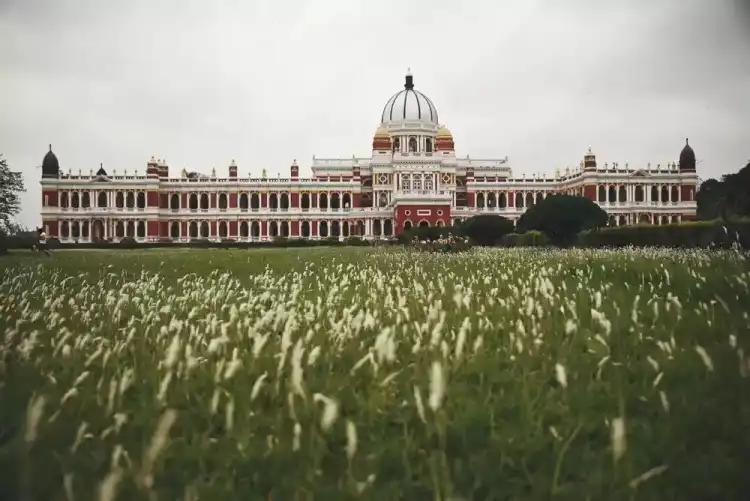Comprehensive Guide to Cooch Behar District
Introduction
Cooch Behar, located in the Indian state of West Bengal, is a district with a rich historical legacy, diverse culture, and significant geographical features. This guide provides an in-depth look at Cooch Behar, covering its demographics, cultural heritage, geographical attributes, cuisine, historical significance, literary contributions, and administrative framework.
Geographical Overview
Cooch Behar is situated in the northeastern part of West Bengal, sharing its borders with Assam and the international boundary with Bangladesh. The district spans an area of approximately 3,387 square kilometers, characterized by fertile plains, numerous rivers, and a tropical climate.
Rivers and Natural Resources
The district is nourished by several rivers, including the Torsa, Kaljani, Raidak, and Gadadhar, which are crucial for agriculture and irrigation. The riverbanks and floodplains are home to diverse flora and fauna, contributing to the region's biodiversity.
Demographics
Cooch Behar has a population of around 2.8 million people. The demographic composition is a mix of various ethnic groups, including Bengalis, Rajbanshis, and several tribal communities. The literacy rate is about 75%, reflecting a strong emphasis on education in the region.
Languages and Religion
Bengali is the predominant language, with Rajbanshi and Hindi also spoken widely. The religious landscape is diverse, with Hinduism being the majority religion, followed by Islam and Christianity. The district showcases a harmonious blend of different religious communities coexisting peacefully.
Historical Significance
Cooch Behar has a storied past, once being the seat of the Koch dynasty. The Koch Kingdom, established in the early 16th century, played a pivotal role in the region's history. The district was integrated into the Indian Union in 1949, marking the end of princely rule.
Key Historical Events
- Formation of Koch Kingdom: The establishment of the Koch Kingdom by Maharaja Naranarayan in the 16th century.
- British Era: Cooch Behar became a princely state under British suzerainty in the 18th century.
- Integration into India: The merger of Cooch Behar with India post-independence in 1949.
Cultural Heritage
The culture of Cooch Behar is a vibrant amalgamation of its royal heritage and tribal traditions. This cultural diversity is reflected in its festivals, music, dance, and arts.
Festivals
Major festivals celebrated in Cooch Behar include Durga Puja, Kali Puja, and Rash Mela. Rash Mela, in particular, is a significant event, drawing visitors from across the region to celebrate Lord Krishna's divine love.
Music and Dance
Folk music and dance forms like Bhawaiya and Chhau are integral to Cooch Behar's cultural identity. These traditional art forms depict the life, struggles, and joys of the local people.
Cuisine
Cooch Behar's cuisine is a delightful blend of Bengali and tribal flavors. Rice and fish are staple foods, with unique dishes like "Bhapa Ilish" (steamed Hilsa fish) and "Panta Bhat" (fermented rice) being local favorites.
Popular Dishes
- Fish Curry: A staple in most households, made with fresh river fish and aromatic spices.
- Pitha: Traditional rice cakes, often prepared during festivals.
- Momo: A popular snack, influenced by the nearby Himalayan regions.
Literary Contributions
Cooch Behar has produced notable poets and authors who have enriched Bengali literature. Renowned figures include Hemchandra Raychaudhuri, a historian and writer, and Shibram Chakraborty, known for his humorous writings.
Significant Works
- Hemchandra Raychaudhuri: "Political History of Ancient India" is a seminal work in Indian historiography.
- Shibram Chakraborty: Known for his unique style of humorous short stories and novels.
Administration
Cooch Behar is administratively divided into five sub-divisions: Cooch Behar Sadar, Dinhata, Mathabhanga, Tufanganj, and Mekhliganj. The district administration is headed by a District Magistrate, supported by various officers for efficient governance.
Administrative Structure
- District Magistrate: The chief administrative officer.
- Sub-Divisional Officers: Responsible for administration in sub-divisions.
- Block Development Officers: Oversee development activities at the block level.
Tourism
Cooch Behar is a tourist's delight, with its palaces, temples, and natural beauty. The most iconic landmark is the Cooch Behar Palace, a magnificent structure reminiscent of European architectural styles.
Key Attractions
- Cooch Behar Palace: Also known as Victor Jubilee Palace, this royal residence is an architectural marvel.
- Madan Mohan Temple: A revered Hindu temple dedicated to Lord Krishna.
- Rasik Bill: A picturesque lake, ideal for bird-watching and nature walks.
Economy
The economy of Cooch Behar is primarily agrarian, with agriculture being the mainstay. Major crops include rice, jute, and tobacco. The district also has a growing handloom and handicraft sector, contributing to its economic diversity.
Agricultural Practices
- Crop Rotation: Farmers practice crop rotation to maintain soil fertility.
- Irrigation: The extensive river network aids in effective irrigation.
Conclusion
Cooch Behar, with its rich history, cultural diversity, and natural beauty, stands as a testament to the vibrant heritage of West Bengal. Whether it's the historical palaces, the cultural festivals, or the scenic landscapes, Cooch Behar offers a unique blend of experiences for residents and visitors alike.
By understanding the intricate details of Cooch Behar's geography, demographics, history, culture, cuisine, literary contributions, administration, tourism, and economy, one can truly appreciate the essence of this remarkable district.
